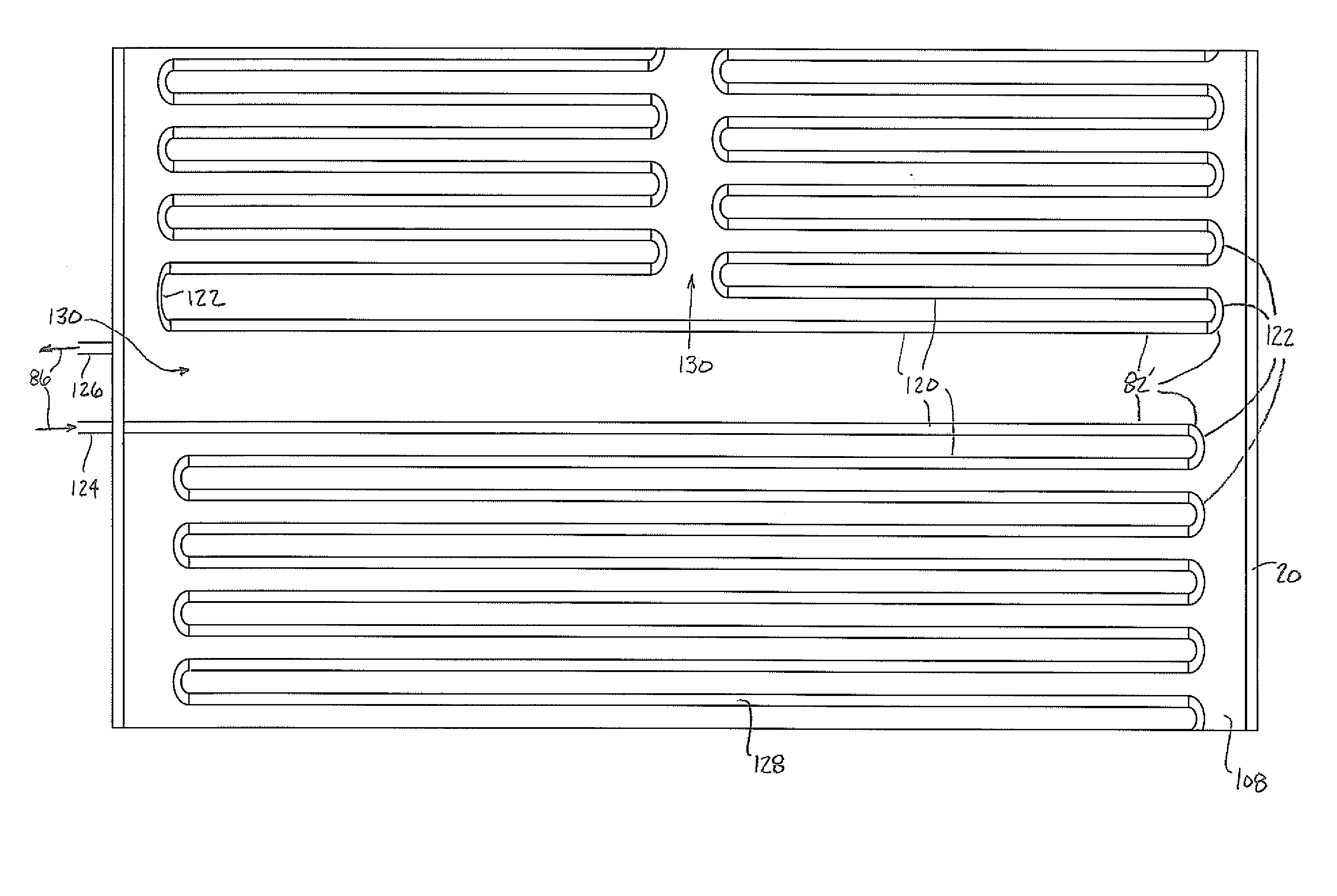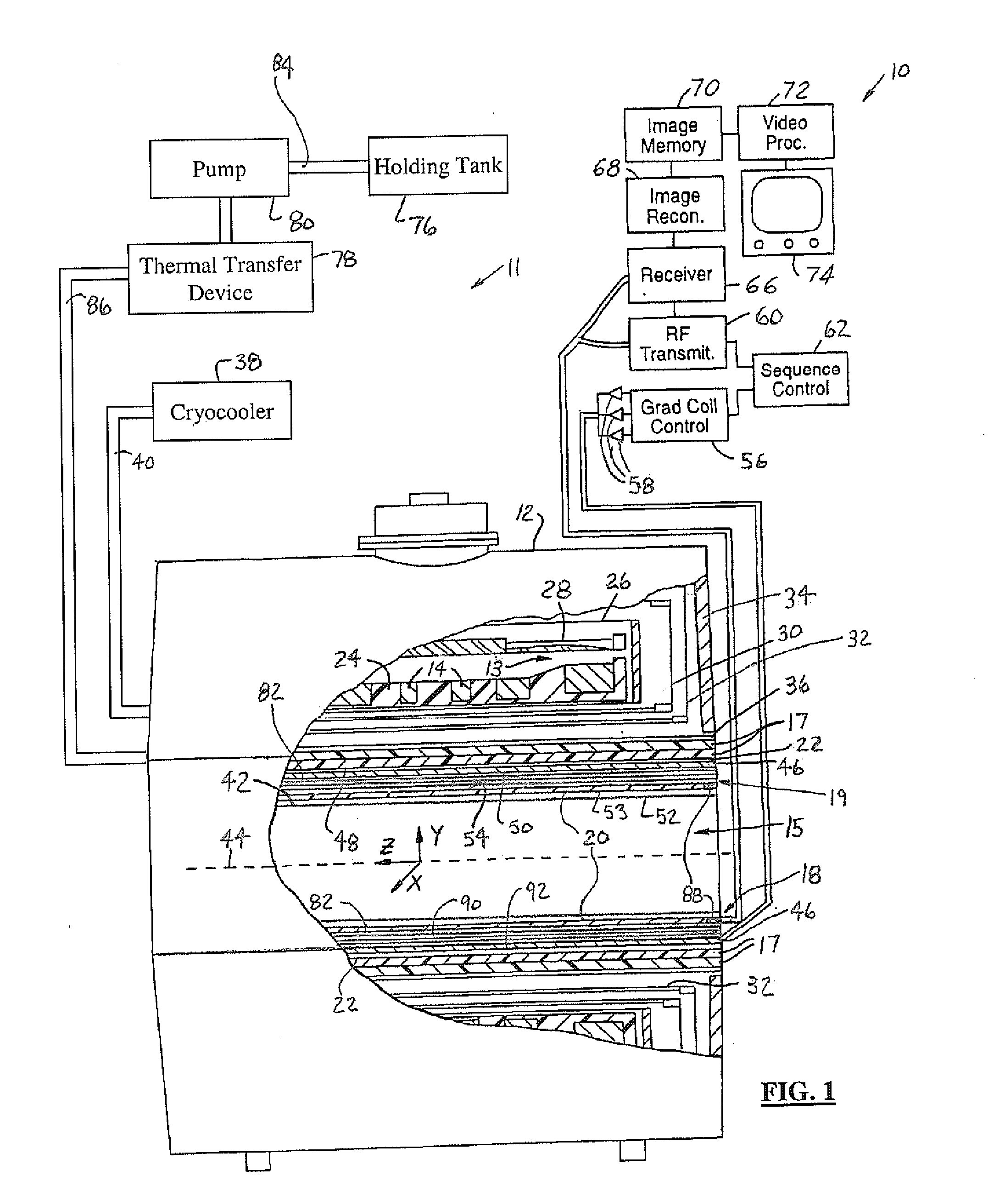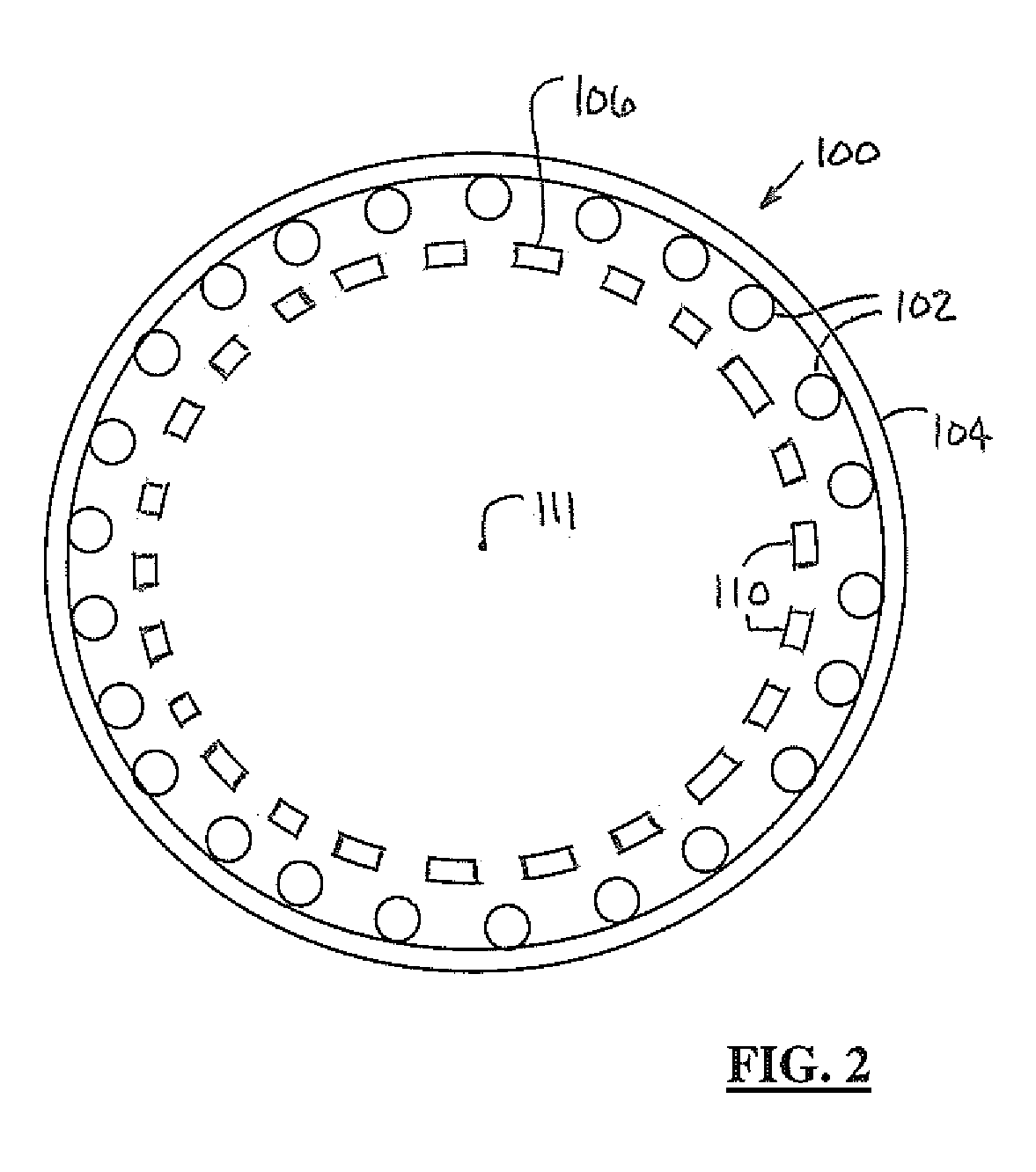MRI system with liquid cooled RF space
a magnetic resonance imaging and liquid cooling technology, applied in superconducting magnets/coils, instruments, magnetic bodies, etc., can solve the problems of increasing the temperature of the patient's body, and increasing the temperature of the cooling fluid. , to achieve the effect of reducing the temperature of the cooling fluid
- Summary
- Abstract
- Description
- Claims
- Application Information
AI Technical Summary
Benefits of technology
Problems solved by technology
Method used
Image
Examples
Embodiment Construction
[0019] In the following figures the same reference numerals will be used to refer to the same components. While the present invention is described with respect to a system for reducing thermal energy transfer from a gradient coil assembly to a RF coil and a patient bore, the present invention may be adapted and applied to various systems including: magnetic resonance imager (MRI) systems, magnetic resonance spectroscopy systems, and other systems that require gradient magnetic fields or radio frequency (RF) fields.
[0020] In the following description, various operating parameters and components are described for one constructed embodiment. These specific parameters and components are included as examples and are not meant to be limiting.
[0021] Also, in the following description the term “RF space” refers the space within an MRI system between and including an RF shield and a magnetic RF coil assembly. The RF space may also include other RF related components, such as a dielectric f...
PUM
 Login to View More
Login to View More Abstract
Description
Claims
Application Information
 Login to View More
Login to View More - R&D
- Intellectual Property
- Life Sciences
- Materials
- Tech Scout
- Unparalleled Data Quality
- Higher Quality Content
- 60% Fewer Hallucinations
Browse by: Latest US Patents, China's latest patents, Technical Efficacy Thesaurus, Application Domain, Technology Topic, Popular Technical Reports.
© 2025 PatSnap. All rights reserved.Legal|Privacy policy|Modern Slavery Act Transparency Statement|Sitemap|About US| Contact US: help@patsnap.com



